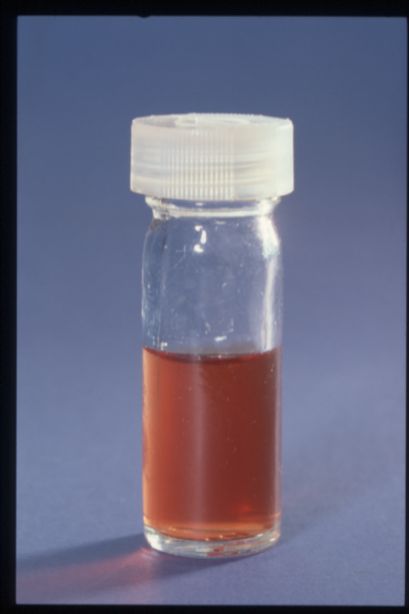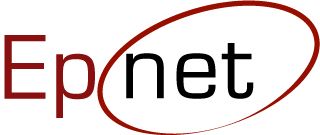Microsoft powerpoint - metbionetporphyriachecked.ppt
Dr Mike Badminton Senior Lecturer/Honorary Consultant Cardiff SAS Porphyria Service (www.cardiff-porphyria.org) Department of Medical Biochemistry University Hospital of Wales and Cardiff University I Overview and Introduction II Acute Hepatic Porphyrias III Cutaneous Porphyria I. OverviewThe porphyrias comprise a group of disorders of the haem biosynthetic pathway that can present with acute neurovisceral symptoms, skin lesions or both. Porphyrias result from partial deficiencies of one of the enzymes of haem biosynthesis and most are inherited. There are 8 different types 4 Acute Hepatic porphyrias 4 Cutaneous Porphyrias They are identified by analysing porphyrins and their precursors in urine, blood & faeces Haem is synthesised in all tissues and cells – 80% for haemoglobin– 20% for enzymes, the majority for liver enzymes (CytP450, catalase) There are 8 enzymes in the pathway: including mitochondrial and cytosolic locations.
The intermediates (porphyrinogens) are unstable and rapidly oxidise to the equivalent porphyrins which are fluorescentPathway intermediates are III isomers but I isomers can form spontaneously from the linear tetrapyrrole by non- enzymatic cyclisation.
The rate limiting step is ALA synthase and is regulated by haem in non-erythroid tissue and iron in erythroid cells.
PORPHYRIA
Succinyl CoA
X-linked dominant
ALA Synthase
Protoporphyria (XLDPP)
(Liver & Erythroid Specific Forms)
Acute attacks
(ALAD, AIP, HCP, VP)
ALA dehydratase
ALA Dehydratase
Porphyria (ADP)
Acute Intermittent
Porphyria (AIP)
synthase
Congenital Erythropoietic Uroporphyrinogen
Porphyria (CEP)
Synthase
Porphyria Cutanea Tarda
Bullous Skin lesions
(CEP, PCT,HEP, HCP,
Hereditary
Coproporphyria (HCP)
Variegate Porphyria (VP)
Protoporphyrinogen
Oxidase
Protoporphyria (EPP)
Red denotes those porphyrias that may present with skin lesions,
essentially those after the formation of the linear tetrapyrrole hydroxymethylbilane (HMB)
• Clinical presentation – Acute attacks only (ADP, AIP)– Acute attacks and/or skin lesions (HCP, VP)– Skin lesions only (CEP, PCT, EPP) – Acute photosensitivity (EPP, XLPP)– Blisters and skin fragility (CEP, PCT, HCP, VP) Laboratory Investigation of Porphyria
District General Lab (Spectrophotometric Methods)1)Measurement of urine porphobilinogen in acute attacks ; screening or quantitative tests are used but there are few false positives.
2)Total urine porphyrin - refer if increased. Correct for concentration by using a creatinine ratio and beware false positives.
3)Faecal porphyrin is not a screening test. Its main use is to distinguish between different types of porphyria.
An EQA scheme is provided from WEQAS Specialist Laboratory (+ Fluorimetric Methods)Quantitative urine ALA, PBGQuantitation and separation by HPLC of urine, faecal porphyrinsPlasma and red cell porphyrins (fluorimetric methods)Enzyme analysis rarely used now. DNA analysis preferred for family studiesFluorimetry requires a specific red sensitive photomultiplier detector Don't forget to protect samples from light! II. The Acute Hepatic Porphyrias
The autosomal dominant acute porphyrias are low penetrant,
disorders that are characterised by acute neurovisceral attacks which
may be life threatening. Acute attacks affect <10% of gene carriers.
ALA dehydratase Porphyria (ADP) is a very rare autosomal
recessive disorder that presents with acute attacks. No case has been
reported in the United Kingdom.
The others are:-
Acute intermittent
Acute neurovisceral attack Hereditary
i. Acute attack only (72%) ii. Skin lesions only (7%)iii. Both 21% Variegate porphyria
i. Acute attack only (20%) ii. Skin lesions only (59%)iii. Both (21%) FrequencyPatients presenting with acute attacks account for approximately 1:100,000 of the population. However the low penetrance means gene carriers are much more common than this would reflect: e.g. the frequency of AIP is actually estimated at 1:5- 10,000.
More common in females than males (5:1): Acute attacks are very rare before puberty and less common after menopause. The peak incidence is in the 3rd & 4th Symptoms/signsSevere abdominal pain mimicking acute abdomen but without localising features is almost universal. Vomiting, constipationPsychiatric symptoms include anxiety, confusion, hallucinations occur during an attack but this does not result in chronic psychiatric illnessHypertension, tachycardia, due to autonomic dysfunctionConvulsions: may be primary or secondary to a rapid onset of profound hyponatraemia.
Motor neuropathy may progress from a mild initial presentation to progressive, severe with complete paralysis Hormonal fluctuations (e.g. menstrual cycle) - particularly the pre menstrual phase correlating with progesterone levelsPrescription Drugs (e.g. carbamazepine, barbitutates)Alcohol (particularly binge drinking), smoking, illicit drugsInfection, dieting, weight loss and stress Pathophysiology of acute attacks
The release of ALA from liver results in neuronal toxicity.
Neuronal damage to the autonomic, motor and central nervous system results in axonal degeneration and patchy demyelination

First LineUrine porphobilinogen (random urine) protected from light, preferably first or 2ndmorning sample
Second Line -Establish TypeTotal Urine and faecal porphyrin and individual porphyrins measured by HPLC as well as a plasma porphyrin scan allows an unequivocal biochemical diagnosis in symptomatic patients.
Plasma Fluorescence
Emission Peak (nm)
ALA, PBG, Copro (III)
Copro III
ALA, PBG, Copro (III)
Proto > Copro III
Management of acute porphyria attack
GeneralRemove/treat precipitating factors such as drugs, infectionSymptomatic relief with analgesics (opiates), IV fluids (N-saline)
plus dextroseSpecificIV haem arginate binds albumin, is taken up by liver and
suppresses the metabolic pathway by down regulating ALA
Management: Prevention
Identify relatives at risk through family studies.
This requires mutation screening of the proband first and then
mutation testing in relatives.
Affected relatives are then advised to avoid known precipitants
III. THE CUTANEOUS PORPHYRIAS
These include Porphyria Cutanea Tarda, Erythropoeitic Porphyria and
the two forms of Erythropoeitic Protoporphyria
Bullous skin lesions occur in: PCT (HEP), CEPand also the acute porphyrias, HCP and VPAcute photosensitivity occurs in EPP and XLDP
Pathophysiology
Circulating porphyrins absorb light ( l 400-410nm) within the dermis of
exposed skin and enter an energy enhanced or ‘Excited state' . The release
of this energy results in the formation of reactive oxygen species which
damages proteins, lipids and DNA
Lipid membrane peroxidation results in release of inflammatory
mediators from mast cells, neutrophils
Bullous Porphyrias: Clinical Manifestations
Chronic damage to the dermal epidermal border by porphyrins absorbing light (energy) leading to reactive oxygen speciesThis results in fragile skin, blisters (bullae) which rupture, crust and heal poorly leaving permanent scarringHypertrichosis (excess hair) in areas exposed to the sun and non-androgen dependent skin.
Other skin features include: Milia (epidermoid cysts), hyper/hypopigmentation, scarring alopecia and sclerodermoid plaques which can affect large areas of the skin
Porphyria Cutanea Tarda (PCT)
This is the commonest porphyria (2-5cases per106 per year) or an
incidence of about 1:25,000 of the populationMost patients (80%) have the acquired (Type I) form in which no
mutations are present at the UROD locus20% have the familial (Type II), autosomal dominant form, with partial
(50%) deficiency of UROD activity in all cells. Clinical penetrance is low
as additional factors (see below) are required for clinical expression.
The clinical presentation results from inhibition of hepatic
uroporphyrinogen decarboxylase to less than 30% activityInhibition of the hepatic enzyme involves an iron dependent
mechanism with most patients having evidence of hepatic siderosis on
Factors which are strongly associated with this hepatic mechanism
include : Alcohol , Prescribed oestrogens, Hepatitis C, HIV, Genetic
Avoid sunlight, skin protection using Dundee Sun Screen (UV
sunscreens are not effective as porphyrins are activated by visible
light (410nm))Stop oestrogen therapy, stop alcohol (if possible) and test for
haemochromatosis and hepatitis
Two specific treatments are available to achieve remission.
1) Venesection (450 ml 2-weekly) -the first choice if iron is
overloadedTreat until there is a borderline iron deficient (e.g. serum ferritin at
the lower limit of normal, Transferrin saturation <16%)
2)Low dose chloroquine (hydroxychloroquine) –a good option for
others 125 (100) mg twice weeklyTreat until the biochemistry normalises
Congenital Erythropoeitic Porphyria
Very rare autosomal recessive porphyria due to a marked deficiency of uroporphyrinogen III synthase (about 20 cases in UK). Most cases present soon after birth. However, as with other autosomal recessive metabolic diseases, phenotype varies with the residual enzyme activity. It can present as a milder form in adulthood. Clinical Manifestations include haemolytic anaemia and extreme photosensitivity and scarring which can lead to photomutilation with loss of digits, ears and nose. Severity correlates with level of haemolysisHypertrichosis (excess hair) and erythrodontia (porphyrin staining of teeth) common
Treatment
General treatments include sunlight avoidance and active treatment of superficial
infections of skin
Blood transfusions to limit erythroid driven haem synthesis together with iron
chelation therapy.
Bone Marrow Transplantation is curative but is focussed on the most severely
affected patients. Gene therapy has been under investigation and clinical trials are
due to start soon.
Accumulation of free protoporphyrin in skin, liver and bone marrow results
in acute photosensitivity due to the free protoporphyrin. Pain usually
occurs 20-40 minutes following exposure to sunlight. It is only relieved by cold water and complete resolution can take several
days following an episodeIt also results in itching, redness, swelling
It usually presents in childhood:Mean age of onset: 1 yearMean age of diagnosis: 12 years!! This is partly due to inexperience among
clinicians, the often limited clinical signs on presentation (diagnose on
history!) and an inappropriate sample being sent for porphyrin analysis
AN EDTA BLOOD SAMPLE IS ESSENTIAL!
Molecular genetics of protoporphyria
Two distinct causes:I. Erythropoietic protoporphyria (EPP) due to deficiency of ferrochelataseAutosomal recessive, with mutation of both allelesIn 95% of EPP cases one of these mutations is a low expression variant present in 10% UK population
II. X-linked dominant protoporphyria (XLDPP) due to gain of function mutations in ALA Synthetase 2 (ALAS2) (the erythroid specific enzyme)Deletions in the C-terminus appear to interfere with regulation of enzyme activity
Avoid sunlight (Clothing, hats reflectant sunblock cream
NOT UV sunblock)Beta-carotene is reported to reduce photosensitivity in
some patients probably by acting as energy and oxygen
radical quenching agent.
Narrow band UV therapy (by exposure to light at 311-313
nm which does not activate porphyrins) aims to thicken
skin and increase the melanin pigmentation
Complications
Liver dysfunction with cirrhosis due to protoporphyrin
damage which can progress to liver failure requiring
Self Assessment Questions
Which Clinical Features occur in the following enzyme defects.
Mark Yes or No.
Skin Lesions or Photosensitivity
Acute Neurovisceral Attacks
ALA Dehydratase Deficiency
ALA Synthase (Erythroid Form)
Self Assessment Questions
• Which Clinical Features occur in the following enzyme defects.
• Mark Yes or No.
Skin Lesions or Photosensitivity
Acute Neurovisceral Attacks
(Erythropoeitic Porphyria)ALA Dehydratase Deficiency (ALA
Dehydratase Porphyria)Uroporphyrinogen Synthase
(Congenital Erythropoeitic Porphyria)Hydroxymethylbilane synthase
(Acute Intermittent Porphyria)Protoporphyrinogen Oxidase
(Variegate Porphyria)ALA Synthase (X-linked
protoporphyria)Uroporphyrinogen Decarboxylase
(Porphyria Cutanea Tarda))Coproporphyrinogen Oxidase


Specialised Porphyria Services and Support
Cardiff SAS Porphyria Services (www.cardiff-porphyria.org)
Biochemical and genetic testing
Clinical and diagnostic advice
Patient support groups
British Porphyria Association www.porphyria.org.uk/
Drug safety information (searchable database)
European Porphyria Network
Source: http://www.metbio.net/docs/metbio-trainingdoc-easa122038-09-05-2011.pdf
bmspaf.org
Sign-up Form for the Bristol-Myers Squibb Patient Assistance Foundation What is the Bristol-Myers Squibb Patient Assistance Foundation? • Bristol-Myers Squibb Company (BMS) established the Bristol-Myers Squibb Patient Assistance Foundation, Inc. (BMSPAF) to help patients who need help paying for medicines prescribed by their healthcare providers. BMSPAF is a non-profit
Die wahrscheinlichkeit, dass katzen mit husten an einer atemwegserkrankung leiden, ist bei weitem größer als die wahrscheinlic
Wenn die Mieze hustet Ein Überblick über feline Atemwegserkrankungen Husten bei einer Katze sollte man nicht auf die leichte Schulter nehmen. Katzen erkälten sich nicht so leicht wie wir Menschen, Husten gehört bei ihnen nicht zum „Alltäglichen". Daher sollte eine Katze, die wiederholt hustet (ohne dabei etwas hervorzuwürgen, z. B. Haarballen) dem Tierarzt vorgestellt werden.Erste Asthma-Anzeichen zeigen sich oft im Alter von 1 – 3 Jahren, können aber auch früher oder später auftreten. Bei manchen Katzen tritt parallel Niesen und / oder Augenausfluss auf.Wenn eine Katze schwere Atemnot hat (mit geöffnetem Maul und sichtlicher Anstrengung atmet, dabei die Ellbogen evtl. etwas nach aussen dreht), muss sie unverzüglich in tierärztliche Behandlung – dieser Zustand ist lebensbedrohlich! Auch wenn es mitten in der Nacht geschehen sollte – warten Sie lieber nicht bis zum Morgen, sondern rufen Sie den tierärztlichen Notdienst oder bringen Sie Ihre Katze ins nächste Tierspital.